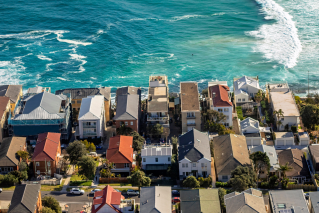‘Relief’ for home owners as RBA pauses rates for first time in 10 meetings

The Reserve Bank has brought an end to its record-breaking streak of interest rate hikes, hitting the pause button as it waits for more economic data about whether the economy is slowing down enough.
The move at the RBA board’s April meeting on Tuesday leaves the cash rate target unchanged at 3.6 per cent.
It also means home owners will avoid another painful mortgage bill hike after 10 rate increases in a row added almost $1000 to typical monthly repayments.
But any reprieve is likely to be temporary. RBA boss Phil Lowe has already warned of more pain to come, saying on Tuesday that further rate hikes could be on the way as the central bank looks to break the back of sky-high inflation over 2023.
“The board recognises that monetary policy operates with a lag and that the full effect of this substantial increase in interest rates is yet to be felt,” he said in a statement on Tuesday.
“The board took the decision to hold interest rates steady this month to provide additional time to assess the impact of the increase in interest rates to date and the economic outlook.”
Treasurer Jim Chalmers noted the rate pause in a tweet on Tuesday.
“While today’s decision will come as a relief for a lot of Australians, we know people will continue to struggle,” he wrote.
“That’s why the costs of living are the primary focus of our economic plan and the upcoming budget.”
Economists were split on whether the RBA would pause rates in April, with forecasters unsure whether a recent spate of economic data that signalled a slowing economy would be enough to stave off another hike.
But with March quarter inflation and economic growth figures to be published in coming weeks, it appears the RBA board wanted to wait for more water to flow under the bridge before making another decision.
Stephen Smith, a partner at Deloitte Access Economics, welcomed the pause, saying much of the RBA’s previous 3.5 percentage points worth of rate hikes had still yet to flow through to household budgets in 2023.
“The effect of 10 rate rises is still working its way through the economy and there are still hundreds of thousands of pandemic-era mortgages fixed at low rates that will revert to variable over [2023],” he said.
“Meanwhile, the heightened uncertainty in the global financial system following the collapse of multiple banks has increased the chance of a black swan event shaking the global economy.”
Indeed APAC economist Callam Pickering said the RBA’s decision to hold on the official cash rate had been driven by such financial stability concerns, with recent bank collapses in the US and Europe being blamed on rapid rate hikes.
“While as recently as a month ago, the market was pricing in several rate hikes, that shifted with the collapse of Silicon Valley Bank,” he said.
“Since then, markets have been pricing in a fair probability of a rate cut later this year.
“The RBA needed to weigh these financial risks against the risks of a prolonged period of high inflation. Rightly or wrongly, they deemed the former a more pressing concern.”
The rate pause comes after a series of economic data in late 2022 and early 2023 showing signs Australia’s economy is slowing faster than experts had anticipated.
Consumer spending, in particular, has weakened markedly in recent months as the cost of living and 10-straight rate hikes have eaten into household budgets.
Headline inflation has also moderated from its December peak by early 2023, at least according to the latest official monthly data from the Australian Bureau of Statistics.
The pace of price rises is, however, still far higher than RBA targets. On Tuesday, Dr Lowe suggested further rate jumps might still be needed to cool inflation in the next two years – a crucial timeline outlined in recent central bank forecasts.
“The board expects that some further tightening of monetary policy may well be needed to ensure that inflation returns to target,” Dr Lowe said.
“The decision to hold interest rates steady this month provides the board with more time to assess the state of the economy and the outlook, in an environment of considerable uncertainty.
“In assessing when and how much further interest rates need to increase, the board will be paying close attention to developments in the global economy, trends in household spending and the outlook for inflation and the labour market.”
The RBA, which wants inflation to sit between 2 to 3 per cent over the medium term, predicts that the headline consumer price index (CPI) will have fallen to 3 per cent annually by July 2025.
But the upcoming release of a broad-ranging review into the central bank, the results of which will be published by Dr Chalmers in April, could change how the Reserve approaches its inflation target.
Shadow Treasurer Angus Taylor said on Tuesday that hundreds of thousands of home owners will roll off fixed-rate loans in 2023.
“We know the rate rises we’ve seen over the previous 10 months have taken time to be felt by families and businesses,” he said in a statement.








